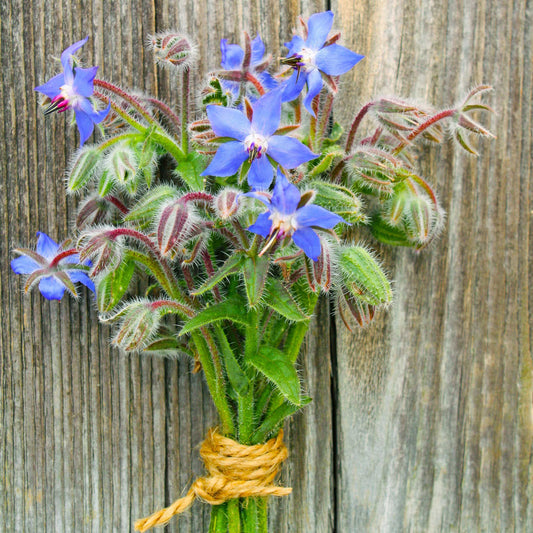-
main-collection-product-grid

Borage Seeds
Must have addition to your vegetable garden as a pollinator attractorBorage Seeds
Must have addition to your vegetable garden as a pollinator attractorRegular price As Low As $4.99Regular priceUnit price per -
main-collection-product-grid

Borage Seeds (Organic)
Edible petals of this flower also attract bees to your gardenOut of StockBorage Seeds (Organic)
Edible petals of this flower also attract bees to your gardenRegular price As Low As $6.99Regular priceUnit price per -
main-collection-product-grid

Borage Seeds - White/Bianca
Bring texture and pollinators with this star-shaped edible flowerBorage Seeds - White/Bianca
Bring texture and pollinators with this star-shaped edible flowerRegular price As Low As $4.99Regular priceUnit price per -
main-collection-product-grid

Borage Seeds - Blue & White Mix
Edible flowers in blue and white attract bees wherever it is plantedBorage Seeds - Blue & White Mix
Edible flowers in blue and white attract bees wherever it is plantedRegular price As Low As $4.99Regular priceUnit price per
Growing borage seeds in your garden
- A flavorful culinary herb with a cucumber-like taste
- Produces attractive, edible flowers
- Easy to grow and maintain
- Holds numerous medicinal purposes
Use borage as a medicinal or culinary herb
Borage, also called bee plant and bee bread, is a culinary and medicinal herb that is widely used in Europe and is becoming increasingly popular in the United States. When planting borage seeds, it is best to use fine, well-worked and moist soil with a pH of 6.0 to 7.0. While these seeds will tolerate partial shade, they greatly prefer full sun conditions. Seeds should be planted about 1/2 inch into the soil and approximately 12 inches apart. Within just 50 to 80 days, the plant will reach maturity and you can begin harvesting. To harvest borage, snip fresh, young leaves before they develop their bristly hairs. Flowers may be snipped individually or in clusters as soon as they open. Borage is considered to be a liberal self-sower, dropping its own seeds and producing new plants the following year. In fact, once a borage plant has established itself in your garden, you will likely never have to reseed again.
Attract pollinators and deter pests with borage
This easy-to-grow heirloom is great for attracting pollinators and can grow up to 24 inches tall and 30 inches wide! Adding borage to your garden will deter pests such as hornworms and it also aids plants it is interpolated with by increasing resistance to pests and disease. Borage is a companion to many other plants such as tomatoes, strawberries, and squash.
The nutritional value of the borage herb
In addition to providing health benefits to its surrounding plants, boarge is an edible flower that provides important phytonutrients, minerals, and vitamins to those who consume it. Borage contains high levels of gamma-linolenic acid (an Omega 6 fatty acid, also known as GLA), vitamin C, vitamin A, iron, calcium, potassium, manganese, copper, zinc, and magnesium! Offering a cucumber-like taste, add fresh borage leaves to salads, juice them with lemonade, add to sausages, pizza, or poultry stuffing, or add it to tea as they do in European countries. The possibilities are endless with this tasty herb. Some medicinal uses of borage include treatment of arthritis, dermatitis, premenstrual painful conditions, anxiety, bowel syndrome, kidney ailments, and more. It also can improve respiratory health and skin conditions and is said to "give courage and comfort to the heart." You could say that borage is a sort of super plant.
For more information about planting, growing, and caring for borage seeds, see the Borage Seeds Planting Guide.



